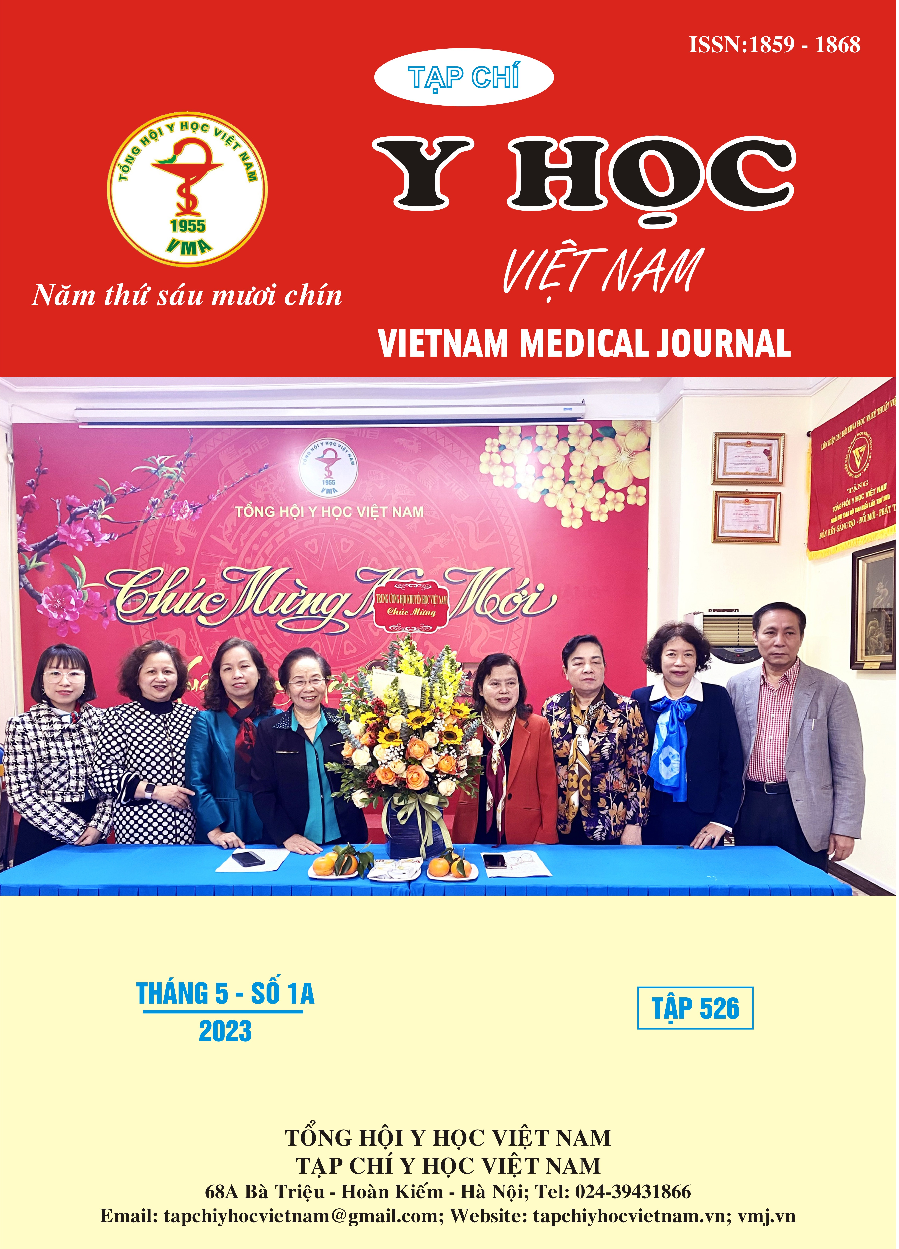PRIMARY OUTCOMES OF VENTRICULAR SEPTAL DEFECTS CLOSURE USING THE RIGHT VERTICAL INFRA-AXILLARY MINI-THORACOTOMY FOR CHILDREN LESS THAN 5KG AT VIETNAM NATIONAL CHILDREN’S HOSPITAL
Main Article Content
Abstract
Objective: Evaluating the effectiveness and safety of minimally invasive surgery through the right vertical infra-axillary mini-thoracotomy for patients with ventricular septal defects weighing less than 5 kg at the Heart Center – Vietnam National Children's Hospital. Methods: From February 2021 to January 2022, 28 patients diagnosed with ventricular septal defects weighing less than 5kg underwent minimally invasive surgery for closure of the ventricular septal defect at the Heart Center – Vietnam National Children's Hospital using the right vertical infra-axillary mini-thoracotomy approach was retrospectively performed. Results: There were 28 patients collected in this study, with 8 male and 20 female patients. The median weight and median age of patients in this group were 4.8 kg (IQR, 4.5-5 kg) and 4.1 months (IQR, 3.52-4.78 months). The mean diameter of the ventricular septal defect was 8.3 ± 1.4 mm. Three patients (10.7%) are associated with patent ductus arteriosus, and 2 patients have left superior vein cava. The location of ventricular septal defect was: 22 patients (78.6%) were perimembranous, 3 patients (10.7%) were sub-aortic, 2 patients were doubly-committed, and 1 patient was inlet. The mean time of operation was 157.2 ± 22.2 minutes, mean aortic cross-clamp time was 45.04 ± 13.4 minutes, and mean bypass time was 68.4 ± 13.9 minutes. The median length of incision was 5 cm (IQR, 4-5 cm). The mean time of ventilation was 11.7± 19.8 hours. There was no mortality or need to convert to the other approach. Three patients (10.7%) developed arrhythmia after operation (2 had junctional ectopic tachycardia, and 1 had sinus bradycardia), and 2 patients (7.1%) had a small residual ventricular defect. The last follow-up showed no residual ventricular septal defect and no chest deformity in all patients. Conclusions: The primary outcomes of minimally invasive surgery through the right vertical infra-axillary mini-thoracotomy for patients with ventricular septal defects weighing less than 5 kg at Vietnam National Children’s Hospital were safe and effective. Studies with larger patient populations and longer follow-up periods are needed to accurately assess the effectiveness of this treatment.
Article Details
Keywords
ventricular septal defect, weight less than 5kg, minimally invasive surgery
References
2. Prêtre R, Kadner A, Dave H, Dodge-Khatami A, Bettex D, Berger F. Right axillary incision: A cosmetically superior approach to repair a wide range of congenital cardiac defects. J Thorac Cardiovasc Surg. 2005 Aug;130(2):277–81.
3. Liu H, Wang Z, Xia J, Hu R, Wu Z, Hu X, et al. Evaluation of Different Minimally Invasive Techniques in Surgical Treatment for Ventricular Septal Defect. Heart Lung Circ. 2018 Mar;27(3):365–70.
4. Dodge-Khatami A, Salazar JD. Right Axillary Thoracotomy for Transatrial Repair of Congenital Heart Defects: VSD, Partial AV Canal With Mitral Cleft, PAPVR or Warden, Cor Triatriatum, and ASD. Oper Tech Thorac Cardiovasc Surg. 2015;20(4):384–401.
5. Zhu J, Zhang Y, Bao C, Ding F, Mei J. Individualized strategy of minimally invasive cardiac surgery in congenital cardiac septal defects. J Cardiothorac Surg. 2022 Dec;17(1):5.
6. Dave HH, Comber M, Solinger T, Bettex D, Dodge-Khatami A, Prêtre R. Mid-term results of right axillary incision for the repair of a wide range of congenital cardiac defects☆. Eur J Cardiothorac Surg. 2009 May;35(5):864–70.
7. Mishaly D, Ghosh P, Preisman S. Minimally Invasive Congenital Cardiac Surgery Through Right Anterior Minithoracotomy Approach. Ann Thorac Surg. 2008 Mar;85(3):831–5.


